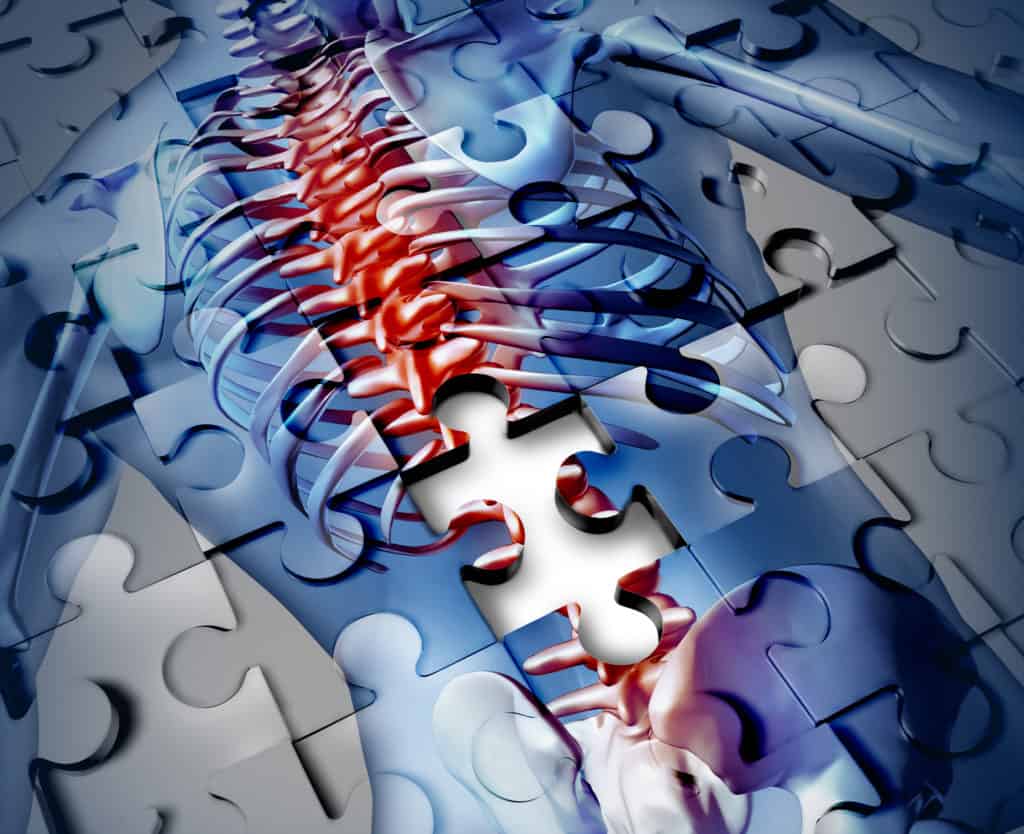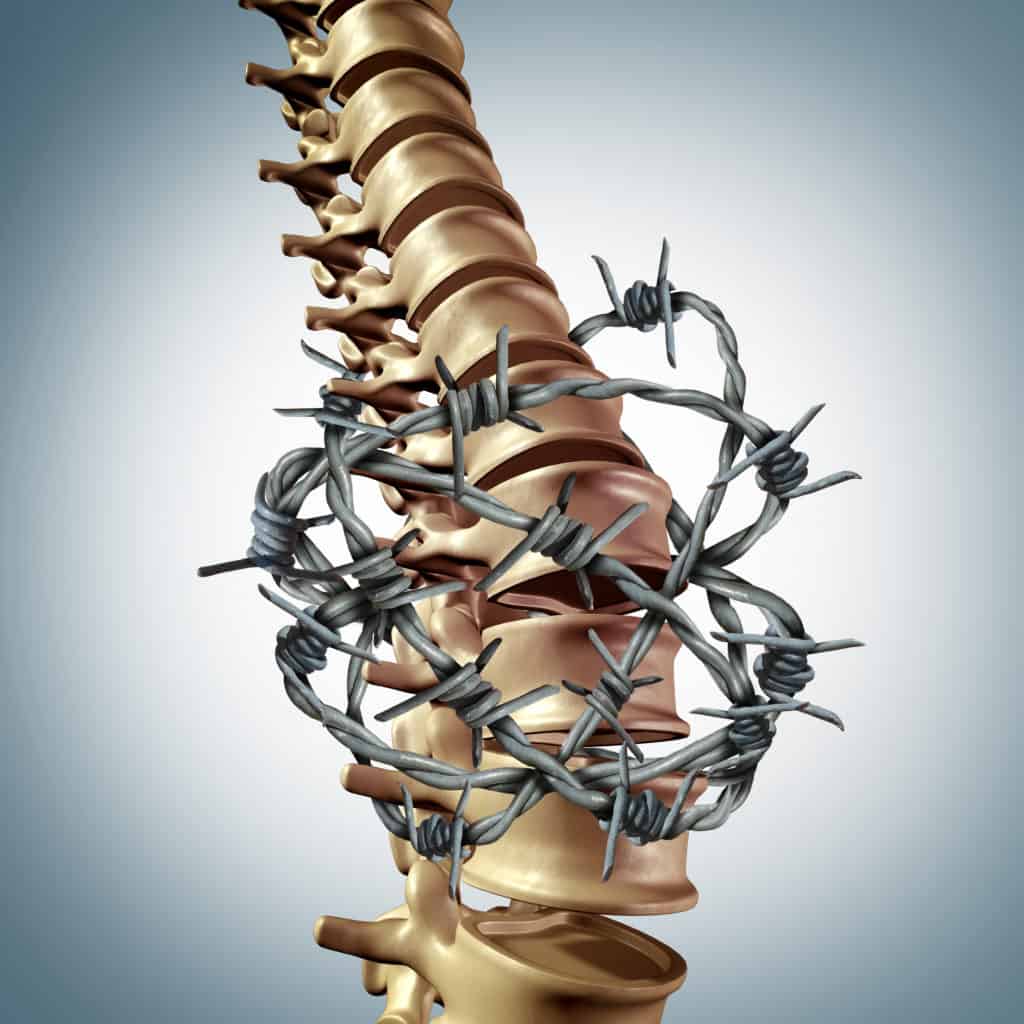Many of our patients feel defeated by their debilitating back pain, daily headaches, foot, knee, or neck pain. They come to us in a desperate, last-ditch attempt to find relief. They’ve heard about myofascial release therapy – although they’re not sure what it is.
Yet, after trying different doctors, treatments, drugs, and supplements, they don’t hold out much hope for a long-term solution. But what they discover is that the big fancy suit (or as John F Barnes calls it: straight-jacket) we wear on top of our organs, bones, muscles, ligaments, tendons, and nerves – that we call “fascia” – is the missing link and the key to a pain-free life.
In this blog, we explain how myofascial release therapy (MFR) takes a more holistic view of what’s going on inside your body and how myofascial release therapy goes a step further than physical therapy to restore fluid mobility.
We’ll also explain how this specialist therapy allows your bones, ligaments, tendons, nerves, and organs the space and freedom to reorganize and heal after surgery, illness or injury.
“Avengers, reassemble!”

The human body is pretty awe-inspiring when you think about it. It heals cuts like magic, regenerates lung and liver tissue, and fixes broken bones.
Sometimes, however, your lymphocytes (the guardians of your immune system) and your chondroblasts (the super-cells that make new cartilage and make bones good again after a break), and all the other messengers that allow you to stand up straight, walk/run, regulate your nervous system and control other essential functions run into roadblocks.
They find a way, of course. They cope and compensate. But unfortunately, it’s this coping and compensating, in response to illness, injury, inflammation, or trauma that causes the fascia to dehydrate and solidify and set like jello. And it’s this protective process that causes stubborn chronic pain and dysfunction – long after the initial injury/trauma.
In other words, our bodies might be clever, but they’re not perfect.
They get things working again – by any means possible, but they sometimes need a helping hand to get things working well again.
But what is fascia? And what does it have to do with my chronic pain?

Fascia, or myofascia, is the fibrous connective tissue that wraps around everything in your body. It surrounds your large muscles and ligaments and forms the smaller wrappings within smaller bundles of muscle fibers – going smaller and smaller until you get to the muscle fibers and cells.
Fascia is the tissue that connects and holds everything in place. Visceral fascia encases your lungs, liver, kidneys, and other organs. It blends into the periosteum – the connective tissue wrapping around your bones. But it goes even deeper than that; it also intersperses into bones. In fact, it may surprise you to learn that bones are fascia; they’re mineralized connective tissue.
Remember the song that goes something like this,
“…your leg bone connected to your knee bone, your knee bone connected to your thigh bone, your thigh bone connected to your hip bone…”
Well, all of this is true, of course, but as the song says, it’s about “dry bones,” i.e., a skeleton.
In reality, in a living, breathing human being like you and me, it’s considerably more complicated. Your leg bone connects to every other bone, ligament, muscle, organ, and nerve in your body – via the connective tissue fabric, fascia. But unlike cloth, fascia is alive – with blood vessels, nerves, and sensory receptors that make it almost as sensitive as our skin.
So, rather than thinking about our bodies as separate pieces: bones and organs, we should consider them one piece. Whole and seamlessly interconnected.
Once you visualize this all-encompassing connective tissue, or fascial ‘suit’, it begins to make sense why a 10-year-old sport injury or car accident is the cause of pain in a seemingly unconnected area of your body. For instance, shoulder pain can often be attributed to a problem with your ankles.
It’s worth noting, too, that fascia doesn’t just respond to illness or injury. It’s also sensitive to chronic stress, anxiety, and emotional trauma.
Suppose you’ve spent months/years in a state of tension, with your shoulders hunched up around your ears. In that case, your fascia may have adapted and solidified in that position.
Here’s another situation. If you’ve spent long periods sitting at a desk and living a sedentary lifestyle, your fascia – believe it or not – may have remodeled itself into the shape of your chair.
“Fascia is the biological fabric that holds us together. It is our connective tissue network, the 3D spider web of fibrous, gluey, and wet proteins that binds (all of our trillions of cells) together in their proper placement.
Understanding fascia is essential to the dance between stability and movement – crucial in high performance, central in recovery from injury and disability, and ever-present in our daily life from our embryological beginnings to the last breath we take.”
– Tom Myers, author of Anatomy Trains
How Does Myofascial Release Therapy Work?

Myofascial Release Therapy is a technique that uses hands-on pressure to release connective tissue restrictions, reduce pain, and restore fluid mobility. During a treatment session (after taking a full history), your practitioner examines your body to find the tell-tale stiffness/rigidity associated with myofascial restriction.
We refer to these areas as ‘restrictions‘. Interestingly, they’re often in an area of the body that is miles away from the site where the pain is (which is often the reason why traditional physical therapy doesn’t provide long-term relief).
Once we’ve identified your specific restrictions, we use our hands to engage into your body with gentle and sustained pressure that allows the subconscious protections to let go and helps the adhered, glued tissue to release. This “release” is what allows for lasting change in your body and relief of your symptoms.
Depending on the severity of your restrictions, it may take one session or a number of sessions to dissipate the rigidity and for the connective tissue to become malleable and elastic.
When they’re freed up – potentially after years of constriction – patients report that the sense of relief and “lightness” felt in the body is revolutionary.
Some patients feel tired immediately after a session, but as you can imagine, your entire body can now move, breathe, and function more efficiently, so after the initial detox from the buildup of toxins around the restriction(s), most people feel liberated and invigorated with a renewed sense of energy and vitality because the strings of their straight jacket have finally been cut.
Blood flow returns to long-starved areas. Proper nerve function comes back online – memory and cognition improve. Sticking points and inflammation stop triggering your pain receptors.
Your ribs, pelvis, hips, knees, and other joints realign – no longer pulled out of shape by tight connective tissue. And, possibly, most importantly for your overall health and sense of wellbeing, your endocrine, digestive, circulation, and respiratory systems relax, and flow more smoothly – because they no longer have to battle fascial restrictions to maintain their homeostatic balance.
Your nervous system believes all is well again.
Calm is restored throughout your body.
And your fight-or-flight system is switched off.
Is Myofascial Release Therapy Right For Me?

By the time we reach 35, our bodies have usually been through quite a lot – from childhood cuts and scrapes and bike falls in the early years to childbirth, sport injuries, and, in some cases, serious accidents or illness. It all takes its toll. Scar tissue forms, and your injured tissues start to stiffen and tighten.
Over time, these restrictions build up until the mobility you once enjoyed starts to ebb away prematurely, and you begin to experience pain from the associated restrictions or nodules in your fascia.
But it doesn’t have to be that way and myofascial release therapy is a great way to make sure you retain a good level of flexibility and mobility as you age.
Myofascial Release Therapy is a non-invasive treatment that supports your body’s own innate intelligence. There are no needles, injections, machinery or equipment.
There may be a small amount of discomfort in extremely tight areas, but it’s not injurious. In fact, most patients find the treatment sessions relaxing. Like a really good sports massage – only way more effective for long-term pain relief.
In summary, Myofascial Release Therapy is for you if:
- You’ve been in pain for a month or longer (sadly, for some, this may run into years).
- If you have pain that keeps coming back or you feel sore and achy all over your body, with no apparent explanation.
- You have unexplained headaches/migraines
- You have stiffness in your shoulders, knees or lower back
- You would like to reduce your reliance on painkillers and anti-inflammatory medications.
- We would also recommend it to patients who feel like they’ve reached the end of the road. Traditional physical therapy hasn’t worked, and you want to avoid surgery or steroid injections
Does that sound like you?
Want a free 15-minute consultation with a specialist Myofascial Therapist to find out how we can help you? Reach out to us. We’re always happy to help. And if you’re in pain now, we can give you some tips and advice that you can start using right away. You can get in touch with us via our Contact Page.

